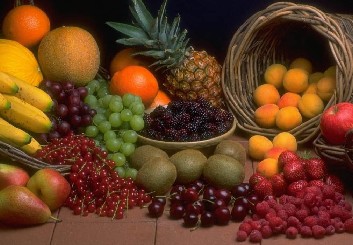



How to Make Great Dressings
by Frederic PatenaudeFor more information on raw food, vegan recipes, etc. get The Raw Secrets which contains many more raw food vegetarian recipes, along with lots of information, pictures, and techniques.
Many people cannot imagine salads without dressing. Dressings are meant to enhance the flavor of a salad. In the sunfood cuisine, dressings are also highly nutritious, and balance the green leafy vegetables, which form the base of the salads, to turn them into complete, satisfying meals.
The typical commercial dressing sold in most stores contains the following main ingredients: fat (in the form of low quality oil), sugar (usually corn syrup or other artificial sweetener), salt (processed, heated table salt), and vinegar. It is flavored with spices and artificial agents, and contains preservatives that make this factory-made concoction very unhealthy.
Many people, nonetheless, like the taste of store-bought dressings. While there are now organic dressings that you may purchase at your health food store, not all of these products are completely healthy. Many contain low-quality oil. But it is possible, using your blender, or Vita-Mix, to create super-tasty dressings that will have a similar flavor to those found in a store. In fact, these dressings will taste much better than store-bought dressings.
The Basic Ingredients in a Dressing
OIL — Oil is often the most important part of a dressing. It adds body and flavor to both the dressing, and the salad. Although oil is important, you can also achieve a rich consistency with little oil, a point that might be important for people trying to cut down on fat.
TANGY — Vinegar is used in many salad dressings. In the sunfood cuisine we may use apple cider vinegar, which is raw, and also lime juice, or lemon juice, to give a tangy bite. The dressing may also be blended with other fruit juices, such as orange juice, or with tomatoes, for an additional tangy effect.
SUGAR — SWEET — In traditional dressing, some sort of sweetener is always used. In the sunfood cuisine, when we choose to sweeten our dressings, we use the natural sweetness of fruits. Sugar in dressing adds a really nice flavor that most people appreciate. However, it is not necessary to use sweet elements in dressings.
SALT — It is good to make dressings as savory as possible, so we usually add something like sea salt, nama shoyu (or tamari sauce), or sea vegetables, to enhance the flavor of the dressings.
SPICES — HERBS — Beside the items listed above, spices may also be used to enhance the flavor of salads. Experiment with your favorite herbs in dressing recipes to find flavor combinations that are most pleasing to you.
BODY INGREDIENTS — Since most of the previous categories of ingredients are rather strong tasting, we like to blend our dressings with vegetables, to add body to the dressings without having to use too much fat. We like to use non-sweet fruits, such as cucumbers and tomatoes, as a dressing base. We may also add water.To create a basic dressing, choose ingredients from each of these categories, and blend them together. Find an original way to mix flavors together, in a way that tastes pleasant to you.
Oily Ingredients
- Almond butter
- Avocado
- Cold-pressed flax seed oil
- Cold-pressed hemp seed oil
- Extra-virgin olive oil
- Other cold-pressed oil, such as sunflower oil.
- Other nut butter
- Soaked almonds
- Soaked sunflower seeds
- Other soaked nuts or seeds
- Tahini
- Young coconut meat
Tangy-Sour Flavorings
- Apple cider vinegar
- Lemon juice
- Lime juice
- Orange juice (also counts as sweet)
- Tangerine juice (also counts as sweet)
- Passion fruit juice (also counts as sweet)
- Other fruit juice (also counts as sweet)
- Tabasco sauce
- Tomatoes
Sweet Flavorings or Ingredients (optional)
- Dates and other dried fruits
- Honey
- Maple syrup
- Orange juice (also counts as tangy)
- Tangerine juice (also counts as tangy)
- Passion fruit juice (also counts as tangy)
- Other fruit juice (also counts as tangy)
- Fresh fruits, such as mango, pear, or persimmon
- Salty Flavorings or Ingredients
- Celery
- Sea salt
- Dulse, in flakes or whole
- Kelp powder
- Nama shoyu, or tamari sauce
Spices & Herbs
- Cayenne pepper
- Jalapeño pepper
- Garlic
- Ginger
- Herbs, such as dill, thyme, rosemary, oregano, or basil
- Onion — red, white, Spanish, or shallots
- Spices, such as curry or black pepper
- Tabasco sauce
Body Ingredients
- Carrots
- Celery
- Cucumber
- Tomato
- Zucchini
How long can you keep these dressings? Many of the following dressings, as they contain fresh ingredients, will only keep for a couple days in the fridge. I would suggest that you adjust the quantities to fit your needs.
Click Here For Your Free Diet, Health and Fitness Tips Magazine
[Home] [Articles] [Cuisine] [Recipes] [Resources] [Links]
© 1999-2021 SunFood.net